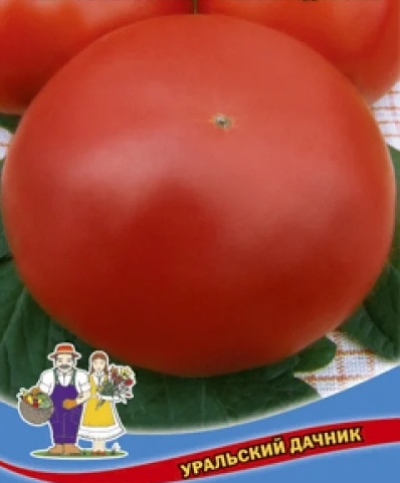
- Authors: Steinert T.V., Teplova N.S., Aliluev A.V., Avdeenko L.M., Romanov A.M., Volkova V.Yu., Osintseva S.N.
- Year of approval: 2021
- Category: grade
- Growth type: indeterminate
- Appointment: fresh consumption
- Ripening period: mid-season
- Growing conditions: for open ground, for film greenhouses
- Bush size: tall
- Bush height, cm: 160-180
- Leaves: medium length, dark green in color
The Sugar Lightning variety belongs to the sweet varieties of tomatoes, which differ not only in their delicious taste, but also in the special sugar content of the pulp. Unpretentious and high-yielding, it is suitable for cultivation in the suburban area and for industrial cultivation. They are consumed in the form of salads, sliced, used for making juices, pasta.
Breeding history
The authors are T. V. Steinert, N. S. Teplova, A. V. Aliluev, L. M. L. M. Avdeenko, A. M. Romanov, V. Yu. Volkova, S. N. Osintseva. Included in the State Register in 2021.
Description of the variety
The bushes are tall, reach a height of 160-180 cm, the leaf is medium, dark green. It grows very quickly, throws out simple flower clusters, on which a lot of ovaries are formed. Refers to indeterminate species. Suitable for open ground, for film greenhouses.
The main qualities of the fruit
Large size, weighing 300-600 g, flat-round shape with slight ribbing, red, dense, juicy, fleshy flesh, sugary at the break, smooth skin. They are not stored for long.
Taste characteristics
Sweet with honey flavor and pleasant aroma.
Ripening and fruiting
Refers to mid-season varieties, 110-125 days pass from germination to harvest. Tomatoes can be harvested in July-August. Ripen very quickly in small batches.
Yield
It is considered a high-yielding species that bears fruit stably. About 6-7 kg are removed from the bush. The most delicious tomatoes are obtained when ripe right on the branches.
The timing of planting seedlings and planting in the ground
Seeds are sown in March - early April. The planting material is disinfected (by means of "Fitosporin", "Albit") and treated with a stimulant for better germination ("Epin", "Zircon"). They dive at the stage of 1-2 true leaves. They are fed 3 times with complex fertilizers for tomatoes. 14 days before planting, the seedlings are hardened, taken out into the air, first for 15-10 minutes, and then the period of stay is gradually increased to 24 hours.
They are transferred to greenhouses in April-May; they are planted in open beds in June. Seedlings at the time of transplantation should be 60-65 days old, by this time the plants will have 6-7 true leaves and one flower cluster.
The soil for Sugar Lightning should not be acidic or alkaline; it should be brought closer to neutral in acidity. Compost, wood ash, potassium-phosphorus compositions are introduced into the beds for planting in advance.

Growing tomato seedlings is an extremely important process, because it largely depends on whether the gardener will be able to harvest at all. All aspects must be taken into account, from seedbed preparation to planting in the ground.
Landing scheme
Plants are planted at intervals of 30x50 cm.

Growing and care
The variety definitely requires pinching and a garter. They are formed into 1-2 trunks. The species prefers abundant sun throughout the day. Watered with warm water 2 times a week only after sunset. It is important to ensure that the soil has time to dry out between waterings. The beds are recommended to mulch. They feed the whole season: at the stages of growth, flowering and fruiting. During the period of growth and flowering, organic fertilizers containing nitrogen are applied. Throughout the season, they are moderately fed with potassium, phosphorus, boron and magnesium. When it gets colder, it is better to apply top dressing by foliar method. The following mixture has a good effect on the taste of the culture: 200 g of wood ash, 30 g of table salt are taken for 10 liters of warm water, mixed and infused for 2 days, watered with 500 ml under 1 bush.
To obtain very sweet fruits, the plant requires a lot of sun and fresh air, and the full ripening on the branch improves the taste. If the culture is grown in a greenhouse, then it is necessary to regularly arrange through ventilation.




A plant needs different micronutrients at each stage of growth. All fertilizers can be divided into two groups: mineral and organic. Folk remedies are often used: iodine, yeast, bird droppings, eggshells.
It is important to observe the rate and period of feeding. This also applies to folk remedies and organic fertilizers.
Disease and pest resistance
It has a high immunity to the main diseases of tomatoes; for prevention, it is recommended to treat the branches and soil with a solution of copper sulfate.


Resistant to adverse weather conditions
It blooms and forms ovaries with a significant increase and decrease in air temperature.
Growing regions
Recommended for planting throughout Russia, including the Urals and the Far East, in the North Caucasus region and in the north.For the southern regions, landing in the open ground is permissible.
Review overview
Gardeners like the abundant fruiting and quick ripening of tomatoes: some are ripe, while others are already blushing. Several buckets are removed from one tomato, the fruits are delicious and very fragrant. Others are not satisfied with the short shelf life.

























































































